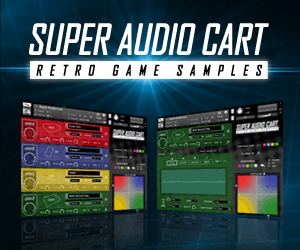Summary
Reverb, short for "reverberation", is the apparent presence of physical space and depth in a recording. The term is also used to describe an effect used to simulate this space and depth artificially. Early methods of creating reverb used analog equipment, but this has been largely forgone in favor of digital reverb hardware and reverb software plugins.
A typical usage of digital reverb is to create the illusion that instruments are being played in a particular physical space, such as a concert hall. This is particularly important in achieving realism with orchestral instruments (see ==Guidance==, below.)
There are two general types of digital reverb. "Algorithmic" reverb uses a series of complex algorithms to generate the virtual space from scratch. All hardware reverbs fall into this category, as well as most plugins. The second type is "convolution" reverb, which uses recordings of an actual physical space to achieve an even more realistic sound. Due to the advanced nature of convolution reverb, it is typically much more CPU-intensive.
A sample or recording that has relatively minimal reverb is called "dry", while one that has a large amount of reverb is "wet". These terms are often used on reverb effects themselves, to control the amount of processing to be done.
Guidance
Reverb is one of the most essential tools in ReMixing. Free reverb plugins are easy to find (see ==References==) but can make the difference between an artificial, lifeless mix and a vibrant one.
- When using acoustic instrument sounds like orchestra or piano, use reverb to make them sound more real.
- Avoid putting anything more than light reverb on low end-heavy sounds, such as basses and kicks.
- Keep your reverb decay time below 3 seconds.
- Use similar reverb settings throughout your project, for consistency.
If you are trying to achieve a more realistic sound overall, almost all acoustic instruments benefit from some amount of reverb. For a more consistent sound in your mix, a single reverb preset should be used as a Send rather than an Insert, with varying amounts sent to each instrument. This is especially useful in bringing orchestral samples to life, and is also very effective on acoustic guitars, vocals, hand percussion and certain parts of the drum kit.
Snare and clap sounds deserve a special mention, as they often receive significantly more reverb than other parts of the drum kit (kick, hi-hats, cymbals, toms) in some song genres, such as ballads, synth rock, 80s metal and electronica. Specifically, "gated reverb" is often used on these drum sounds. This technique involves taking a very wet reverb effect with a long decay time and applying a gate, which abruptly cuts off the reverb sound after a short time. The end result is a more spacious and powerful snare or clap that does not make the mix muddy.
